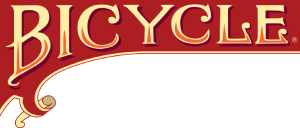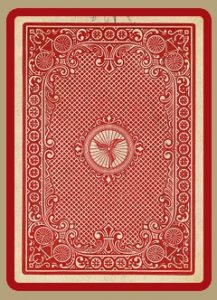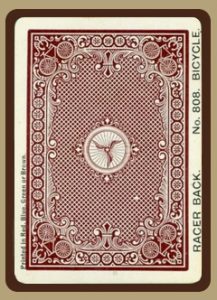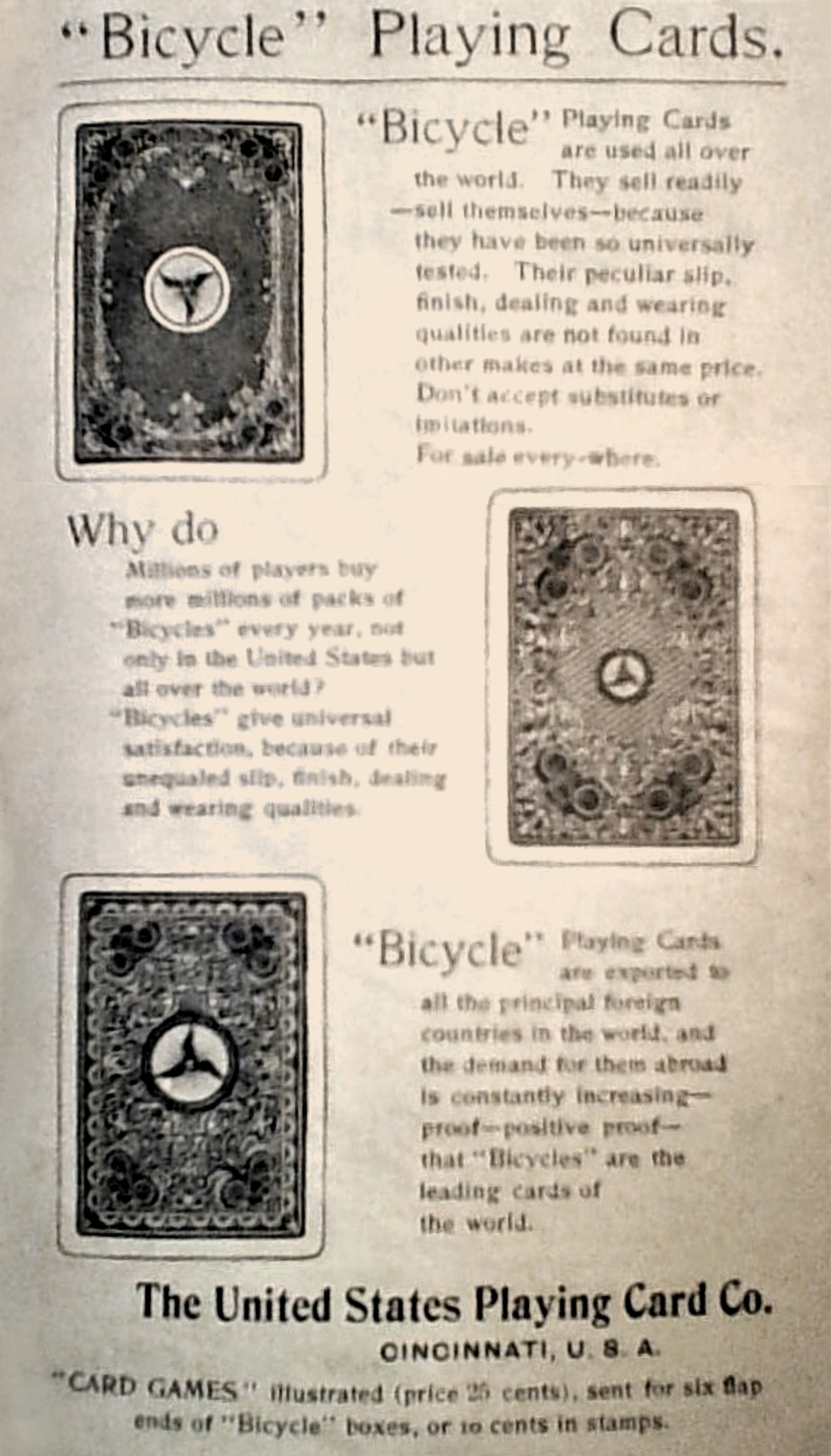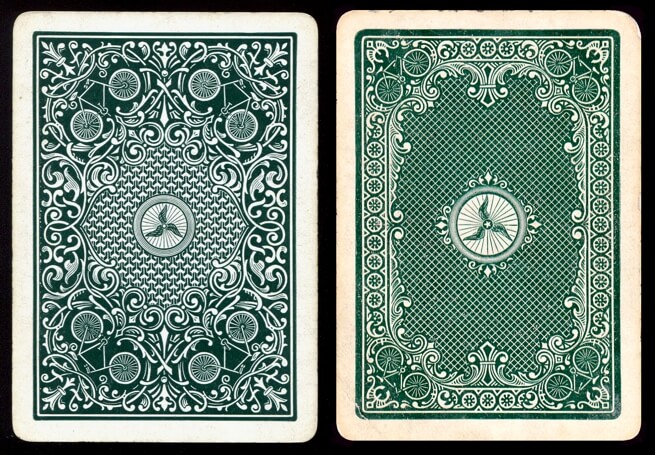Introduced in 1895. Discontinued in 1906. I question this end date, as the deck would be found in the US8d edition if it had lasted that long, and I have yet to see a Racer No. 1 in that iteration. 1898 is a more likely end date as the only examples I have ever seen are US8b. In any event, Racer No. 1 is an uncommon deck and, as with all of the Bicycle decks issued in four colors, extremely rare in green or brown. At first glance, this back is very similar in style and substance to Model No. 1 (see the third image, below).
Shown in the last image, below, is a second, very rare variant of Racer No. 1, first discovered by a collector friend. He writes: “In the June 2014 issue of Clear the Decks (Volume XXVIII, Number 2) under the heading ‘A New Discovery,’ I brought a previously unknown variation of the Bicycle Racer back, with a larger winged wheel in the center, to the attention of the 52 Plus Joker playing card collectors club. I believed this to be an example of the very first printing of Racer No. 1 in 1895, based on the US8b ace of spades, jester hat joker and correct original US8b box. Finally, in 2021, I am pleased to be able to confirm that this is the case. I have found an 1896 advertisement for Bicycle playing cards that shows this very same back design (please see the first picture, below). This advertisement is from National Method of Duplicate Whist, one of USPCC’s numerous playing card booklets, which contains 40 pages of rules for whist followed by their customary 4 pages of advertising at the back. The inside back cover shows their Wholesale Price List No. 7, dated July 1st, 1896.” This early variant of Racer will henceforth be known as Racer No. 1a.
Note that the advertisement in the National whist booklet also shows Model No. 1, as well as the early variant of Tangent, the Tangent No. 1a back, which also features a larger central winged wheel. More information on that back design can be found on the Tangent No. 1 page.
Pictured in the second image, below, is a promotional deck printed by the U.S. Playing Card Company for Krupp’s, a German steel manufacturing company. The deck is very rare, and came in its own celluloid and cloth box. A Krupp’s No. 1 railroad train wheel is depicted both on the joker and on the outside of the box. All other cards are standard. This deck was issued in at least one other back design, Lotus (Hochman US8) and is known to have been available in both red and brown.
This is the first and perhaps only example of an otherwise standard Bicycle brand deck being issued to promote another product. It would be very interesting to know how the Krupp’s company managed to convince the United States Playing Card Company to create this unusual deck of cards. But, I do have a theory.
According to Wikipedia, The Krupp family, a prominent 400-year-old German dynasty from Essen, had become famous for their production of steel, artillery, ammunition, and other armaments. The family business, known as Friedrich Krupp AG, was the largest company in Europe at the beginning of the 20th century. It was important to weapons development and production in Germany in both world wars.
Krupp’s had a Great Krupp Building with an exhibition of guns at the Columbian Exposition, which was staged in Chicago in 1893. I believe that this deck of cards was commissioned by Krupp’s as a promotional item for that international exposition. It would also not be surprising if USPCC requested that the deck not depict armaments of any kind, resulting in the train wheel being the only steel product shown on the cards. By necessity, then, the release date of the US8b ace of spades (and this deck) would be two years earlier than currently estimated (the other Krupps deck is the earlier US8 release), but I don’t think that that is an unreasonable supposition. In any event, I can think of no better explanation for why this prominent European company would have sought and succeeded in having their products promoted by an American playing card manufacturer in the 1890s.
SALES DATA
A green Racer No. 1 single sold on eBay for $19 on 10/22/16, which is a very reasonable price for such a desirable single.
A brown Racer No. 1 sample card sold on eBay for $120 on 2/22/17. Sample cards are rarely offered as singles, and make for excellent type examples in any collection, so this is not a surprising result. See a scan of the card in the last image, below.
A VG red US8b Racer No. 1 deck (no joker/no box) sold on eBay for $90 on 3/08/17.
A G/VG blue US8b Racer No. 1 deck (no joker/no box) sold on eBay for $103 on 7/07/20.
A VG blue US8b Racer No. 1 deck (no joker/no box) sold on eBay for $122 on 9/02/20.
